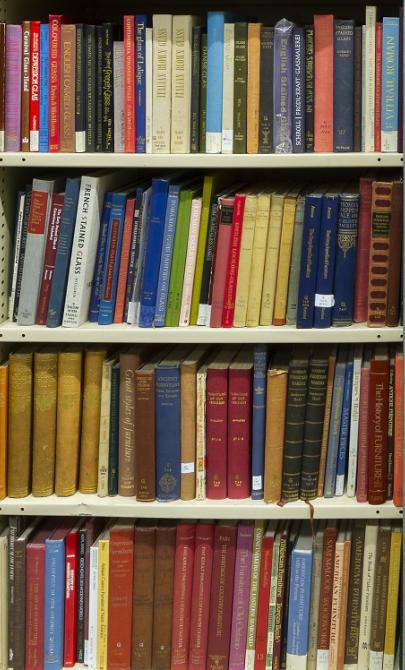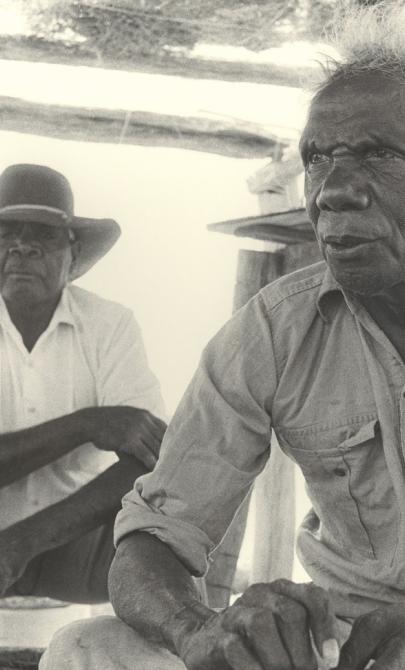First Nations family history research guide
Looking after yourself
Tracing your First Nations family history brings many different emotions. It can lead to wonderful discoveries, though at times can be challenging, difficult and even a little frustrating. Reading historical resources relating to Indigenous peoples can also be confronting. These documents often reflect the time in which they were created and can contain racist, inaccurate and derogatory language and views. They may also cover subjects such as family separations and intergenerational trauma which can be distressing to read about.
It is a good idea to think about sharing your family history research journey with family and friends to ensure your wellbeing and cultural safety.
We have an Indigenous Engagement team that you can reach out to for guidance and support with your family history journey. To connect with the team or learn more about how our reference librarians can help, check out the Get help with your research section below.
Additionally, Link-Up organisations in each state and territory offer social and emotional support to members of the Stolen Generations and their descendants.
Get help with your research
Our librarians can also help you start your research, locate resources and use our microfilm and scanning equipment. Whilst we are not able to undertake extensive family history research on your behalf, we can offer advice, help you locate resources and point you in the right direction.
You can use our Ask a Librarian service to access assistance, ask us specific questions and provide us with the information you have already gathered, such as: a family tree, any family papers and photos, or family history notes.
Researching with the Library
Wirangu Elder, Sandra Miller shares her experiences of using the Library for her family history research.
Wirangu Elder, Sandra Miller exploring her family history
Sandra Miller: Hi, I'm Sandy and I've come to the National Library to trace some of my family history. I was led to believe a lot of material is being held here and just trying to find out a bit more about our background has been something that we as a family have talked a lot about in recent years.
In coming to the Library I knew that I would only have limited time and I wasn’t clear what I was actually looking for. If you don’t know what you’re looking for you don’t know. So making contact with the library before arriving was a really important step because the librarians, who have been extremely helpful and knowledgeable around this whole collection, were able to pull together a lot of the material.
In arriving at the Library I was greeted by the aboriginal librarians and that made it very easy to then have the conversations, explain what I was looking for, because I knew that they would understand the importance of trying to connect with family.
Rebecca Bateman: We were looking at these today because you were hoping that we may be able to find some information about your grandmother.
Sandra Miller: Well that was my main objective in looking at the collection. We don’t know anything about my grandmother, that’s my mum’s mum, because my mother had been removed from her as a two-year-old and never did reconnect with her again. And so we’re particularly interested in where my grandmother actually came from, whether she was a Mirning person or a Wirangu person.
And this is interesting because already I can see on here there’s a name [unclear], which was my grandfather’s name, although they called him Wombat. It’s funny that this page is open.
Rebecca Bateman: Wow.
Sandra Miller: The other thing that the aboriginal team brought to my attention was a collection of photos which had been held by the Lutherans at the Koonibba Mission.
And in that collection were photos that I didn’t know existed of various relatives. There was also 2 photos that I came across of my mum, as a two-year-old and I think about a four-year-old.
I’d encourage people to come to the Library because it is such a, I found it to be such a supportive environment. I felt that the staff were very caring, very supportive and spent quite a lot of time with me, making me feel comfortable.
Yeah, if people are really keen to find and trace their family history this is the first place to come I would say. Because out of having been here it has given me quite a few leads into other places that I need now to go.
I guess this is just the beginning because there’s, for me, now a lot more work that I need to do.
What you can find in the Library
We have a range of resources to assist you with your family history research, including: parish, mission and reserve records; historic newspaper records; personal papers and manuscripts; oral histories; and materials relating to the Stolen Generations. We can also help you find information in our collection and point you to important materials in other organisations' collections.
You may find guides that tell you more about how to do your family history and the resources that are available for specific places and periods of time.
- Lookin for your mob: A guide to tracing Aboriginal family trees by Diane Smith and Boronia Halstead (1990), is a guide that puts a First Nations lens on how to do family history research.
- Connecting kin: guide to records: a guide to help people separated from their families search for their records by Kristy Thinee and Tracy Bradford (1998) is a guide to available records of government and non-government welfare agencies, hospitals, and government non-welfare agencies.
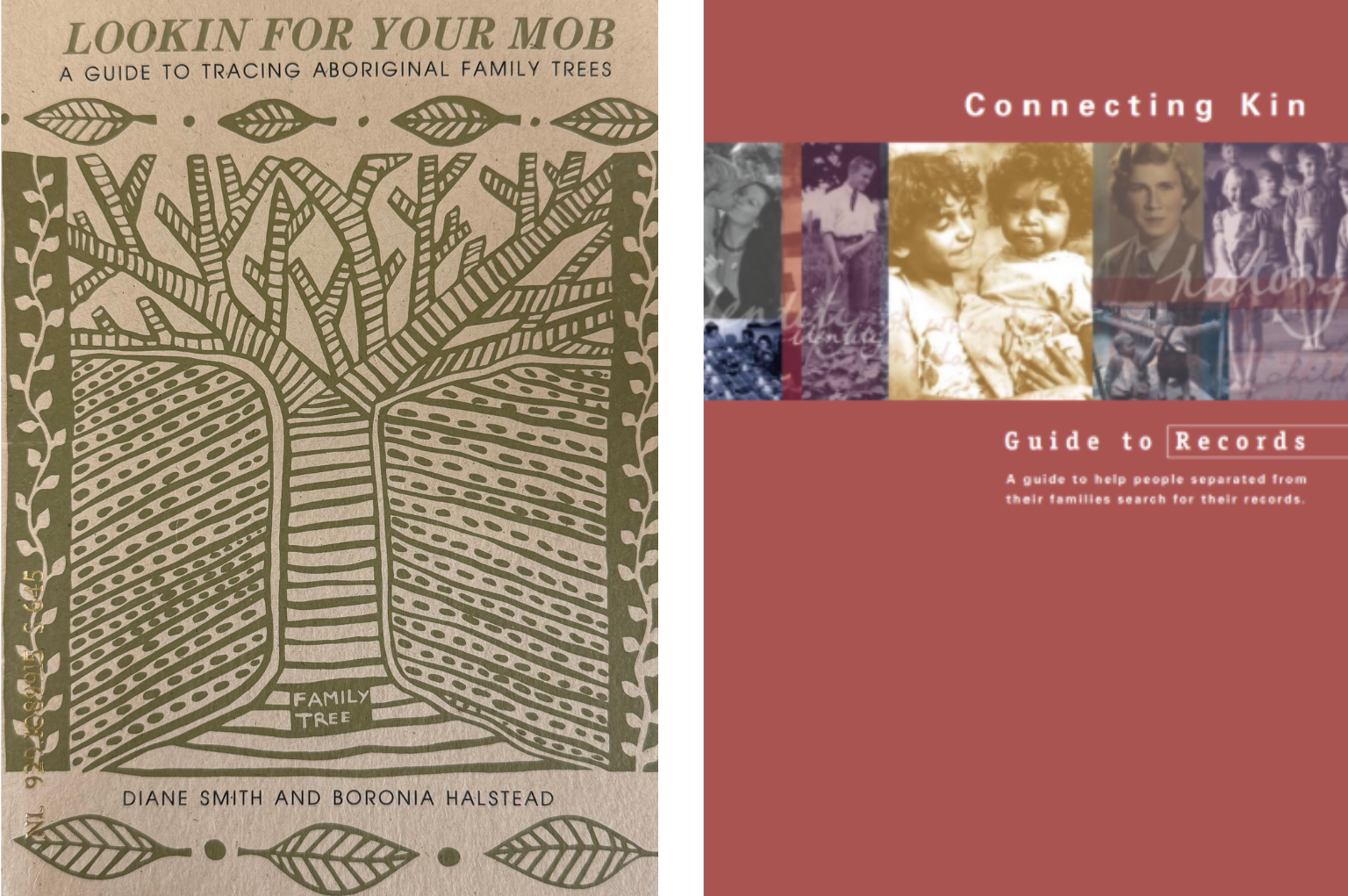
Dian Smith & Boronia Halstead, Lookin for your mob: A guide to tracing Aboriginal family trees, 1990, nla.gov.au/nla.cat-vn354970 and Kristy Thinee & Tracy Bradford, Connecting kin: guide to records: a guide to help people separated from their families search for their records, 1998, nla.gov.au/nla.cat-vn676511
Autobiographies and biographies capture life-stories that can help you find out more about your community and family.
- William Cooper: An Aboriginal Life Story by Bain Attwood (2021), this book details the life and activism of Yort Yorta leader William Cooper including his leadership at Cummeragunja Reserve on the Murray River.
- If Everyone Cared Enough: Her voice reclaimed by Margaret Tucker (2024) details her early life at Warangesda, NSW and Cummeragunja and Moonacullah stations, her life as a stolen child, domestic slave and later years in Melbourne.
- Auntie Rita by Rita Higgens and Jackie Higgins (1994) detail Rita’s life from Bidjara–Bidyara country in central Queensland to her removal to Cherbourg Reserve.
- Kurlumarniny: we come from the desert edited by Anne Scrimgeour, Minyjun (Monty Hale) (2012), a senior Ngulipartu man from the Pilbara region of Western Australia tells his story.
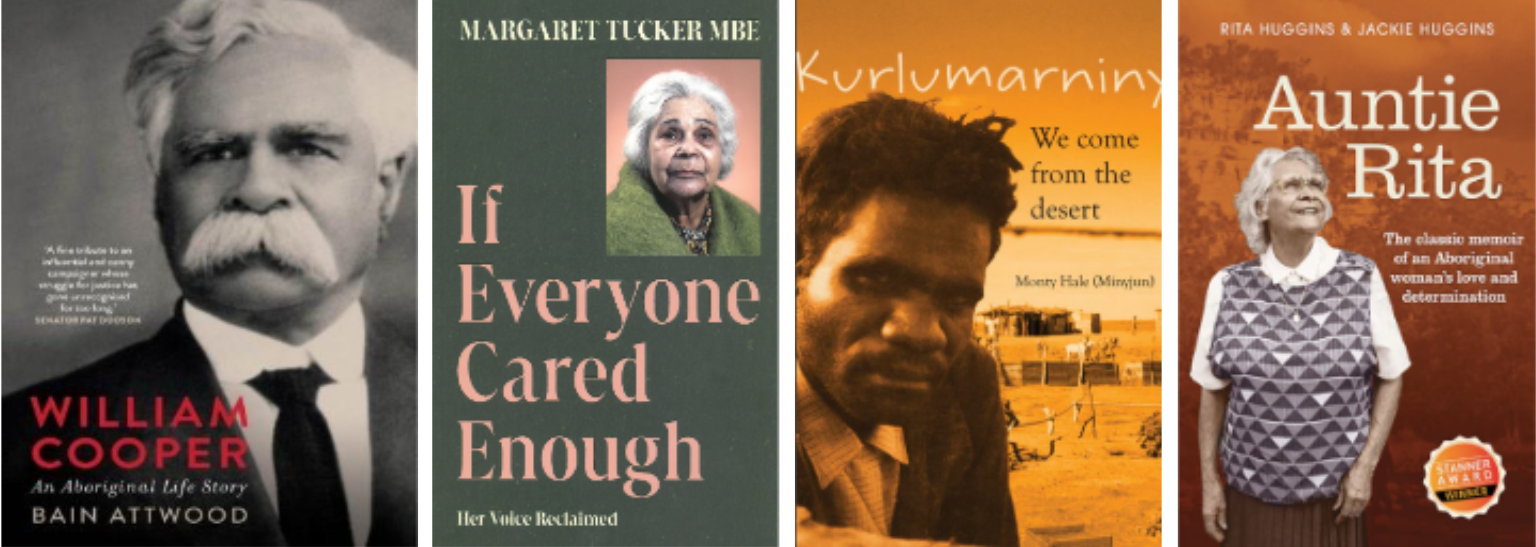
Bain Attwood, William Cooper: An Aboriginal Life Story, 2021, nla.gov.au/nla.cat-vn8625959, Margaret Tucker, If Everyone Cared Enough: Her voice reclaimed, 2024, nla.gov.au/nla.cat-vn10025511, Rita Higgens & Jackie Higgens, Auntie Rita, 1994, nla.gov.au/nla.cat-vn1848041 and Annie Scrimheour, Kurlumarniny: we come from the desert, 2012, nla.gov.au/nla.cat-vn5757213
This includes personal papers, notes, photos and records from contemporary First Nations people, along with historical records from social scientists, missionaries or even medical practitioners.
These collections may include content or portrayals of Aboriginal and Torres Strait Islander peoples that are offensive.
Some of these collections require written permission from communities before material can be accessed. If you wish to view these collections onsite in the Special Collections Reading Room, contact the Ask a Librarian service in advance of your visit and staff can advise about what is needed to access these papers.
We have created finding aids for some manuscript collections:.
- Papers of Charles Duguid [1890-1986]
Contains photographs, slides, diaries and records relating to Ernabella Mission, as well as his postings around Haast Bluff, SA and Petermann, NT. - Papers of Robert Hamilton Mathews [1866-1984]
This collection contains material relating to Mathews' anthropological research on the customs, social life and languages of First Nations peoples. - Papers of Daisy Bates [1833-1990]
Features genealogical information about First Nations peoples in South Australia and Western Australia (compiled between 1904–12). Names of peoples within the Western Australian genealogies have been identified and indexed for the following places:- Albany / King George Sound (SW WA SI50-11, SI50-15)
- Bajinhurrba / Cossack (WA West Pilbara SF50-03)
- Birdan / Onslow (WA West Pilbara SF50-05)
- Busselton map area (SW WA SI50-05)
- Coral Bay (WA West Pilbara SF49-16)
- Esperance (SE WA SI51-06)
- Fraser Range (SE WA SI51-02)
- Janyjinya / Mount Edgar (WA East Pilbara SF51-05)
- Kalgoorlie map area (SE WA Goldfields SH51-09)
- Kellerberrin (SW WA SH50-15)
- Kojonup (SW WA SI50-07)
- Mount Barker (SW WA SI50-11)
- Ravensthorpe (SE WA SI51-05)
- Norseman (SE WA Goldfields SI51-02)
- Northam (SW WA SH50-14)
- Southern Cross (SW WA SH50-16)
- Williams (SW WA SI50-06)
- York (Avon River SW WA SH50-14)
Geographical areas are based on places listed in the AIATSIS Place Name thesaurus.
The Australian Inland Mission
The Australian Inland Mission was established in 1912 by Reverend John Flynn of the Presbyterian Church to provide medical services to remote areas of the Outback. Its legacy included the operation of the Halls Creek Mission in WA. With over 500 manuscript boxes of material this collection is made up of the papers of numerous individuals and organisations and includes photos, maps and oral histories.
Find out more about the Australian Inland Mission collection.
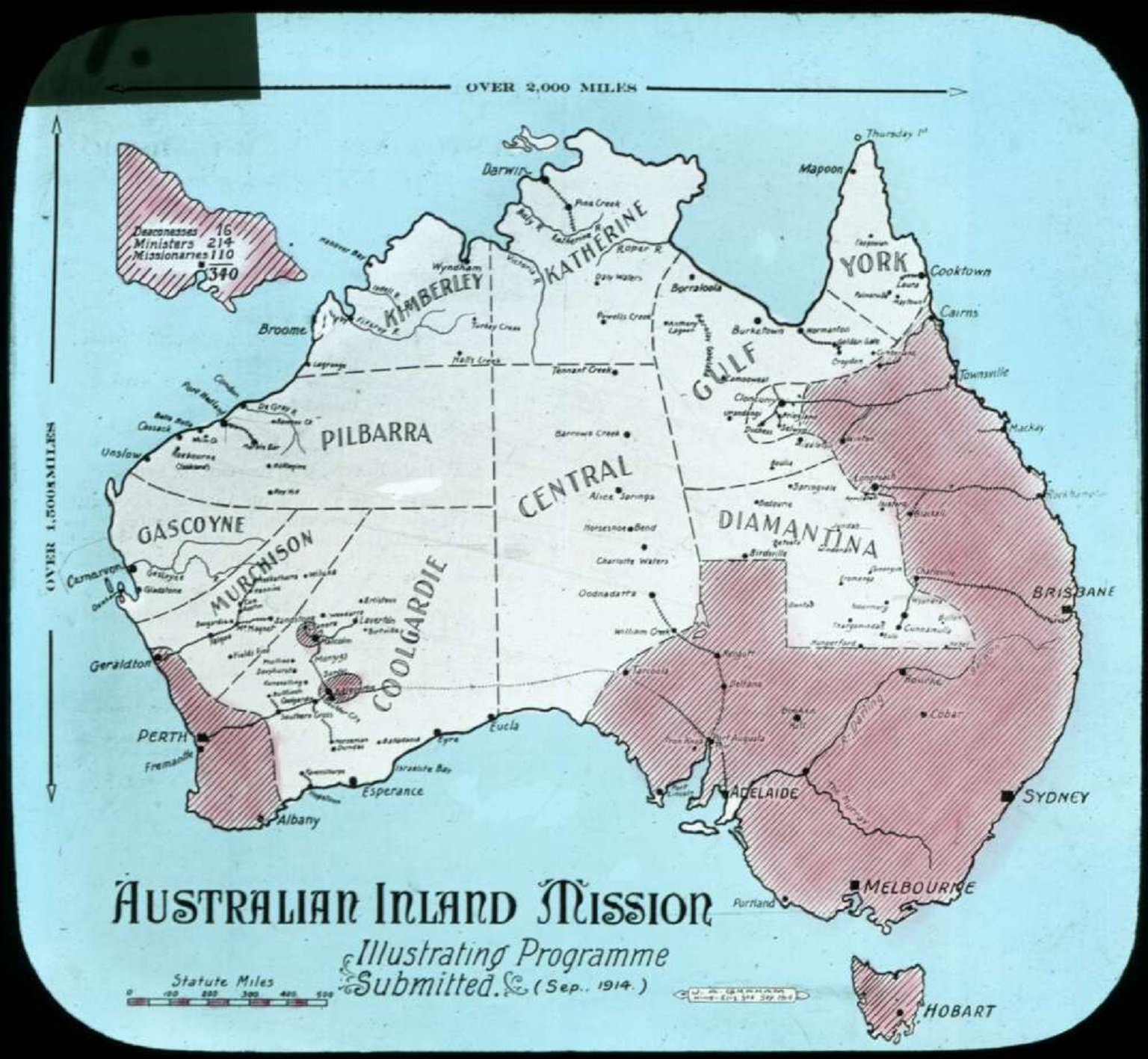
J.A Graham & T.W Cameron, Australian Inland Mission, [map of Australia] illustrating programme, 1914, nla.gov.au/nla.obj-142295888
We have a large number of pictures and photographs of Aboriginal and Torres Strait Islander peoples. Pictorial works including photographs, slides, sketches and paintings are included in the collections as standalone items. They are also included in albums, collections, records and personal papers.
Although many of these works are historical and were created for non-First Nations audiences, photographic and picture collections of Aboriginal and Torres Strait Islander peoples are now very useful for tracing family history.
However, they may contain offensive descriptions and captions. The subjects of these works may not have consented to their images and stories being recorded, and captioning may be inaccurate or insufficient.
This means that searching the catalogue for missions, mob, or language names can be more helpful than searching for ancestor names.
Trove for pictures and photographs
Trove searches the combined pictures and photograph collections of a large number of libraries, including the National Library and all of the State Libraries, as well as numerous galleries and museums. Via Trove, you can browse over 60,000 catalogue entries for images relating to Aboriginal and Torres Strait Islander peoples, places, objects and culture. Many of these images have been digitised and can be viewed online.
You can also explore images related to First Nations peoples and culture in using a dedicated search and a growing explore option which allows for browsing by geographic region, language, and time period.
Featured collections
Ernabella, South Australia
Ernabella was built as a Presbyterian Mission in 1938 on Anangu Pitjantjatjara Yankunytjatjara Lands and was later renamed Pukatja. It is unusual in that the mission respected Anangu culture and traditions, offering education and medical assistance. It is the home of Ernabella Arts, one of the longest continuously running Aboriginal arts organisations.
- Historic photographs of Ernabella, South Australia
- Contemporary photographs of Ernabella, South Australia
Koonibba Mission, South Australia
The Koonibba mission was established in 1898 at a time when the land use of the west coast of South Australia was shifting from pastoralism to agriculture. In 1907 the original church building was converted into a school for children removed from their mothers. The Koonibba Children's Home was established by the Lutheran Church in 1913 as part of the Koonibba Mission Station.
Newspapers include birth, death, funeral or marriage notices, as well as stories relating to other milestones and accomplishments.
Births, deaths and marriage notices or announcements were also published in the relevant church mission or Aboriginal reserve magazines or newspapers. Search the name of the magazine or newspaper via our catalogue.

'Aboriginal Wedding', Northern Star, 25 january 1935, nla.gov.au/nla.news-article94511880
Trove digitised newspapers
Trove is a rich source of information for family history researchers with its digitised newspapers, journals and magazines, which are text searchable.
This includes titles from a wide ranging period, such as Torres News, Bamaga High School magazine, The Australian Abo Call and the Australian Aborigines advocate : a monthly record of work amongst the dark people of Australia.
There is also a dedicated portal for exploring First Australian magazines and newsletters on Trove, such as Tjakulpa kuwarritja (Papunya School) Magazine.
Newspaper clippings
Our print collections include Australian newspaper clippings filed in a variety of subjects covering social, cultural and sporting information from 1900s to early 2000s.
Our collections also hold many files relating to First Nations peoples such files on missions, languages or by articles relating to the region.
Newspaper clippings relating to geographic areas are best discovered by searching for “geographic cuttings” and the location, such as Groote Island or Jabiru in the Northern Territory.
There are hundreds of biographical newspaper cuttings on Indigenous Australians. To search, use “biographical cuttings” and try a few variations on the name of the person you are searching for.
Organisations are also featured in the cuttings files, most discoverable if you search for “newspaper cuttings” and organisations as well as communities. There are separate files for Pitjantjatjara (1975-1991), Aurukunn (1975-1992), Mandjildjara (1977-1979) and Pintubi (1963-1989).
Many of the newspaper articles contained in these files are not digitised so they are a unique resource for family historians to access.
When you’re reconnecting with your family history, maps can be very helpful to understand the places your ancestors lived. They may give you some ideas about where and why your ancestors moved, or were forced to move around.
Maps can identify reserve and mission locations, properties owned and pastoral stations that ancestors or descendants may have worked on across Australia. Some maps show locations of communities or local languages for different regions. They may be historical and captured by independent ethnographers or government organisations, meaning they may not be accurate. There are also some examples of map created with or by community, which capture songlines and cultural heritage.
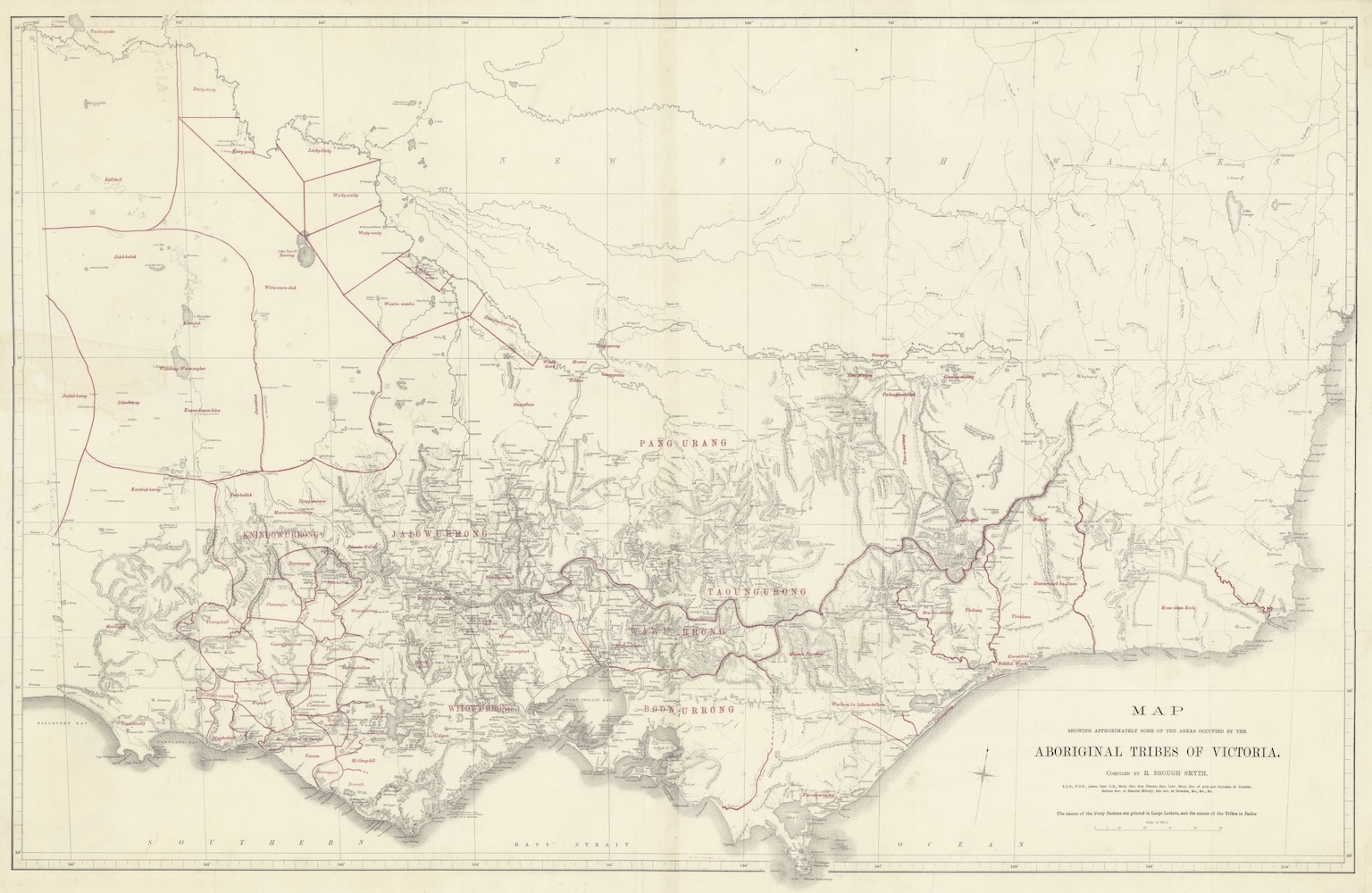
Brough R Smyth, Map showing approximately some of the areas occupied by the Aboriginal tribes of Victoria, 1878, nla.gov.au/nla.obj-231570037
Featured resources
Simon Normand
Simon Normand is an artist, author and environmentalist who has lived and worked with elders in southern Arnhem Land for over 25 years. He has worked with Marra, Yanyuwa, Warndarrang, Nunggubuyu, Waagilak and other Elders to paint maps which show local cultural knowledge and stories for Country.
- Kurrululinya - Maria Island : Budal - Murrungun - Mambali
The map was produced in collaboration between the Ngukurr Elders and Simon Normand. - Marra, Marranbala Country
This map has been created by men and women of the Marra Country to reflect the important features of the land to the people. The original map resides with the Keeping Place-Jilkminggan Community. - Strangways paths : Jurruwumburrangan Jigu - Mangarrayi Country
This map was completed at Jilkminggan community in 2013. The project to map sacred sites and songlines of the Elsey region took three years of collaboration between the artist and community elders. The original map resides with the Keeping Place-Jilkminggan Community.
AIATSIS Map of Indigenous Australia
The Aboriginal Australia map compiled by David Horton published by AIATSIS shows First Nations groups of Australia arranged into regions. To find out more about this map, visit the Map of Indigenous Australia page found on the AIATSIS website.
National Native Title Tribunal Maps
The Tribunal provides an online overview of native title on a regional, state or national levels, including more detailed maps for printing.
Our extensive oral history collection captures personal stories, traditional and cultural practices and social history, ensuring those voices can still be heard in the future. The collection includes hundreds of interviews with First Nations people and organisations.
Search the catalogue for the name of an individual or family. You can also broaden your search to a language group, mission, reserve or pastoral station. Additionally, you can browse recordings using the subject "Aboriginal Australians -- Interviews".
Featured collections
The Bringing them home oral history project includes 340 interviews recorded by 41 interviewers. Interviews were conducted with families and children who experienced separation, as well as others such as missionaries, police and administrators involved in or affected by the process of child removals.
The Seven years on - Life histories of Aboriginal leaders oral history collection consists of 235 interviews with established or emerging leaders from Indigenous communities across Australia. Recordings include leader’s backgrounds, current work and personal views so they can be useful for family historians. Follow up interviews were conducted seven years on.
For more information about finding, accessing and requesting copies of oral histories visit Using the Oral History collection.
Many family history resources are now available digitally. Some can be accessed in the Library building while others can be accessed freely online.
You can navigate to our Family History page in the eResources Portal. There you will find a list of eResources specifically for Family History research.
Other useful databases like the Who's who in Australia database and the ProQuest Historical Newspapers: Australian Collection can be found through search or navigating to the Databases A-Z list.
Accessing and using collections materials
We have an Indigenous Intellectual and Cultural Property protocol in place which recognises First Nations peoples as the owners of their history, heritage, languages and culture. We honour the rights of First Nations communities as the custodians of their cultural knowledge and have developed an Australian Indigenous Cultural and Intellectual Property (ICIP) Protocol to guide the respectful use of ICIP in the collection.
If you are researching material on your own family history, we can help you find and access items related to your search, including restricted materials such as rare manuscript collections and oral histories. Contact Ask a Librarian and we can advise you how to proceed.
View Copyright permissions to understand how you can use, copy or publish collection items.
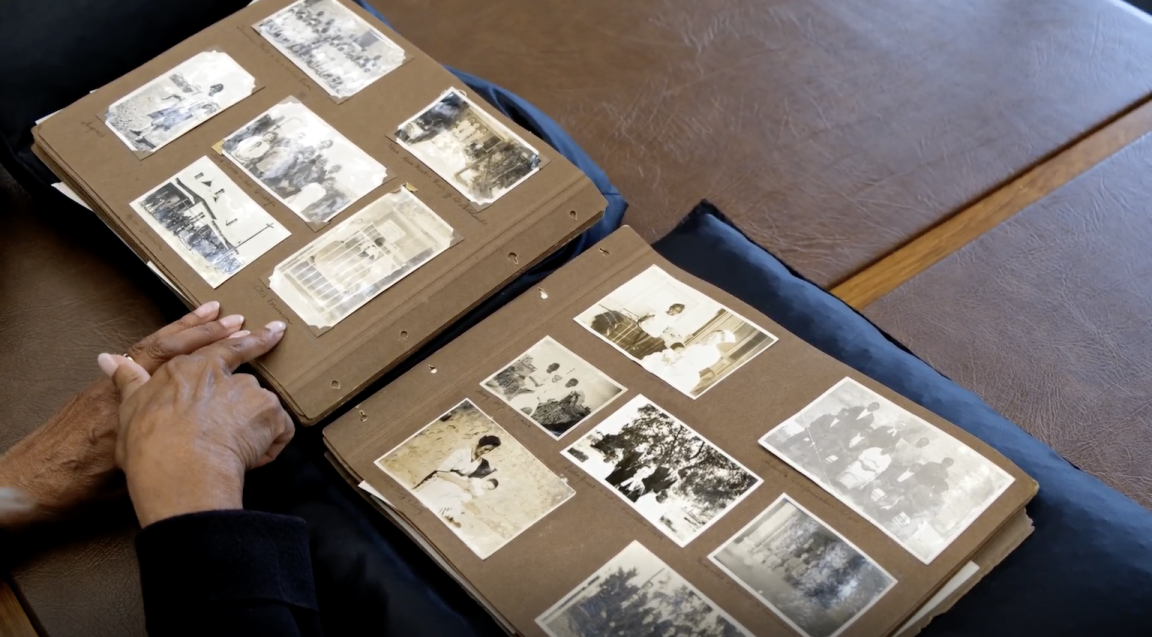
Lutheran Koonibba Mission, South Australia, 1920-1930, nla.gov.au/nla.obj-152896940
Lutheran Koonibba Mission, South Australia, 1920-1930, nla.gov.au/nla.obj-152896940
How to search and find items
Use these tips to help you search for items in the Library and beyond.
Many terms, one meaning
Try using a variety of search terms to find material to help your search.
Use different ways of spelling the names of people, groups or places. Often there are many different ways of spelling the names different and distinct groups within Indigenous Australia, for example, Gaagudju is also spelled Gagadju and Gagadyu.
Remember, people and places might be known by either First Nations names and European names.
Search terms such as First Nations, First Australians, Indigenous and Aboriginal and Torres Strait Islander peoples will all bring up results.
The terms family history and genealogy mean slightly different things but are often used used to refer to the same types of content you’ll find in our databases, websites and catalogue. Make sure you construct your searches to include both.
Search the catalogue
Use our catalogue to start looking at physical and digitised resources in our collection.
Learn more about how to use the catalogue
Keyword search
Use a quick keyword search in the catalogue using the places, family names or people your family is connected to.
For example:
If you get too many results, you can:
- add title, author, subject or AIATSIS subject limits on your search, or
- click into the catalogue full results and use the Limit Your Results options (at the right of the search results page) to display only the items of interest, for example, manuscripts or oral histories.
If you need to widen your search, try searching subject headings. You can search by subject directly in the catalogue (selecting subject in the drop down), or by opening an item’s catalogue record and clicking on the subject headings to find other material related to that subject.
Author search
You can also search by author where a governing body has published the material.
For example:
Browse eResources
Visit Access eResources to find out how to use the our eResources portal where you can access online databases, subscriptions and more.
First, go to the eResources portal. From the portal homepage click on Family History, under Research tools in the left-hand menu, to browse Family History eResources.
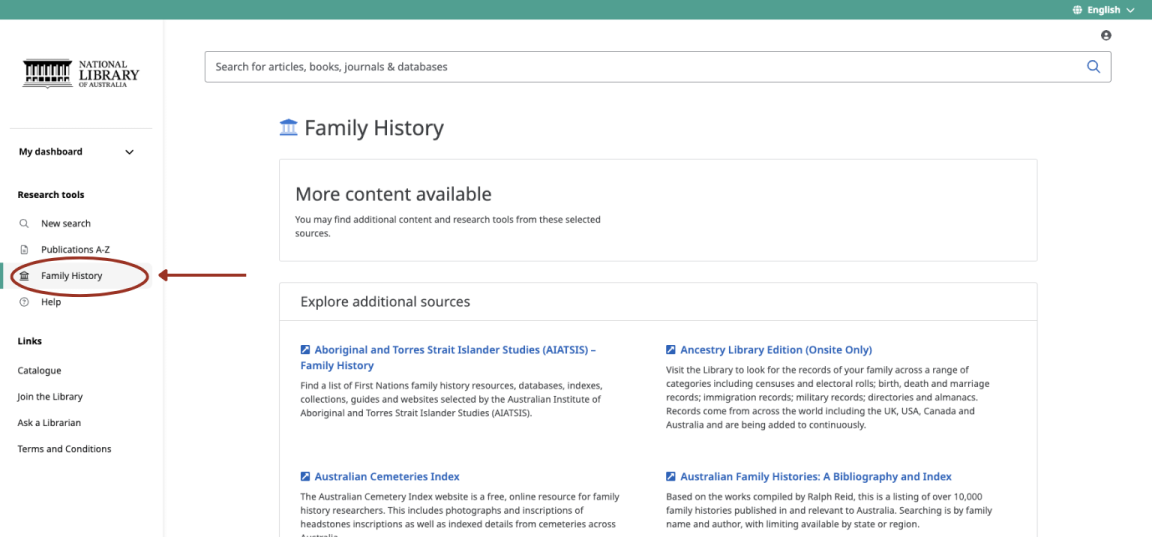
eResources portal Family History Supplemental Page
eResources portal Family History Supplemental Page
Visit us in person
Many of our family history resources are available to access for free in the Newspapers and Family History zone in the Main Reading Room.
For example, to use Ancestry or Findmypast, you must visit the Library in person but these databases are also often available at various public and state libraries around Australia. The material is divided into sections for each Australian State and selected overseas countries.
Search Trove
Our Trove website is free, and on it you can find and view digitised materials and other collection items that are held in many Australian libraries and institutions. Trove includes digitised newspapers, pictures, manuscripts, oral histories, maps, books and archived websites. You could start by searching Trove for the name of an individual, family or broaden your search to a language group, mission, reserve or pastoral station. For more information please visit Trove First Australians and the Help page.
Related research guides
Browse these related research guides to find more information and resources on your subject.
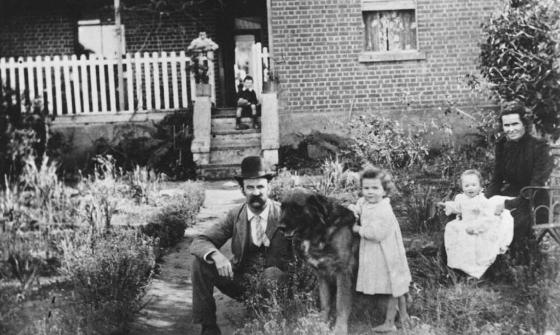
Portrait of Oliver Barberie and family, 1900, nla.gov.au/nla.obj-136621963
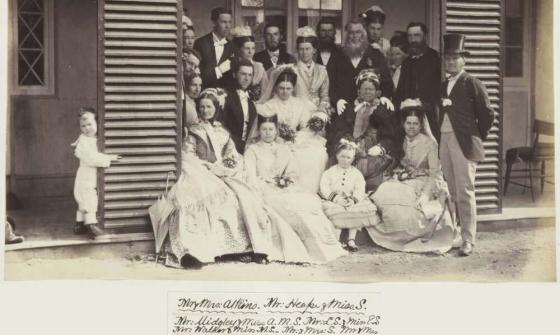
Album of photographs of Bushy Park, Tasmania, and Dandenong, Victoria, 1875, nla.gov.au/nla.obj-139460187
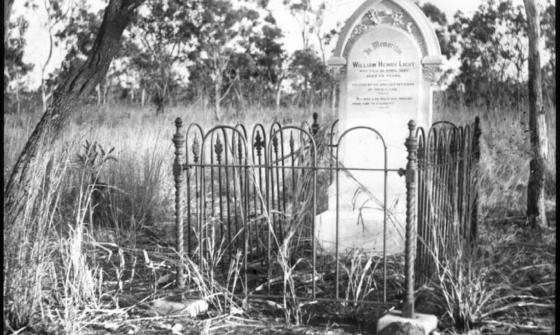
John Flynn, Grave of William Henry Light: a lantern slide from John Flynn's missionary days in Gippsland, 1906, nla.gov.au/nla.obj-142432903
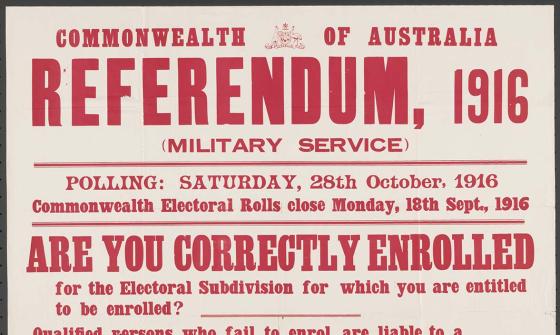
McLaren, J. G and Commonwealth Electoral Office (Australia) issuing body, Referendum, 1916 (military service) : are you correctly enrolled for the electoral subdivision for which you are entitled to be enrolled? Sydney, 1916, nla.gov.au/nla.obj-348412875
Where else to look
Find more resources and information to support your research from other institutions and organisations.
Australian Institute of Aboriginal and Torres strait Islander Studies (AIATSIS)
AIATSIS has developed a very complete Finding your family guide for researching your Aboriginal and/or Torres Strait Islander family history. It contains a number of fact sheets and includes an excellent Family History Kit.
Electoral rolls
Aboriginal people do appear on Australian electoral rolls prior to 1967. You can also read more about the electoral rolls held in our collection and see our research guide on the 1967 Referendum.
Read more about the history of the Indigenous vote:
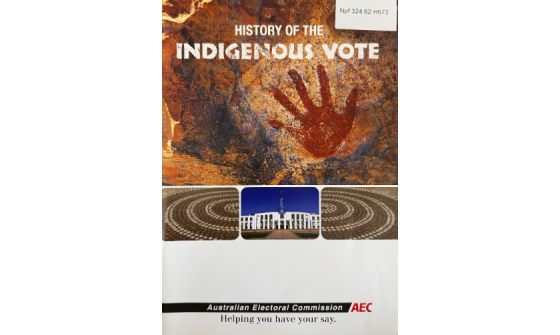
Australian Electoral Commission, History of the Indigenous vote, 2022, nla.gov.au/nla.cat-vn2129410
Link-Up
Family tracing and reunion services are available to members of the Stolen Generations throughout Australia via the AIATSIS-run national Link-Up program.
Link-Up gives priority to first generation members of the Stolen Generations who have directly experienced removal or separation from family and community, especially those who are elderly or have urgent health concerns. It also provides services to subsequent generations and communities of Stolen Generations.
Centre for Indigenous Family History Studies
The Centre for Indigenous Family History Studies has compiled an online index to Aboriginal and Torres Strait Islander names mentioned in the national and state archives.
National Archives of Australia (NAA)
The National Archives holds records created by the Commonwealth Government, mainly since 1901. If the people you are researching are from this period, then they may hold records.
The Bringing Them Home name index
The Bringing Them Home name index is a list of names of Aboriginal and Torres Strait Islander people who appear in government files.
Noel Butlin Archives Centre
Located at the Australian National University in Canberra, the Noel Butlin Archives Centre holds some pastoral station records. Station owners or managers often kept records such as wages, ration books, diaries and registers of births, death and marriages. The Archives also holds records for farm and cattle properties in New South Wales, Queensland and Northern Territory.
ACT Office of Aboriginal and Torres Strait Islander Affairs
The ACT Government holds genealogical records relating to the ACT Aboriginal community. Contact the ACT Office of Aboriginal and Torres Strait Islander Affairs to access information from the ‘Our Kin, Our Country’ genealogy project.
ArchivesACT
ArchivesACT is the main public access point for Australian Capital Territory (ACT) Government records that are more than 20 years old, unless they contain sensitive information relating to personal privacy or community safety. For more information, refer to their guide on Services for Aboriginal and Torres Strait Islander People.
Libraries ACT
Libraries ACT presents Aboriginal and Torres Strait Islander resources on Aboriginal people in the Canberra Region as well as a collection of local Aboriginal and Torres Straits Islander authors.
Native Title Services Corporation family history service
Native Title Services Corporation (NTSCORP) is able to produce free genealogies for individual Aboriginal people from communities. NTSCORP provide genealogies for free, however the request must come from a member of a community for which the Federal Government has provided funding for this specific service.
New South Wales Family Records Unit
The New South Wales Family Records Unit offers assistance to Aboriginal people in New South Wales who wish to access government records relating to themselves or their family. Their website provides advice on how to access government records and links to online heritage reports of Aboriginal children's homes.
The State Library of New South Wales First Nations Family History guide
The State Library of New South Wales has produced a guide to researching your Aboriginal family history in New South Wales. This guide presents a number of useful published works containing family histories (many of which are also available at the National Library), as well as links to State services.
Native Title Services Corporation family history service
Native Title Services Corporation (NTSCORP) is able to produce free genealogies for individual Aboriginal people from communities. NTSCORP provide genealogies for free, however the request must come from a member of a community for which the Federal Government has provided funding for this specific service.
New South Wales Aboriginal Land Council
Land councils can be a resource to help you trace your family history. As a peak representative body and member based Aboriginal organisation, the NSW Aboriginal Land Council website provides links to individual NSW land councils across NSW.
NSW State Archives
The NSW State Archives holds a large collection of NSW government records relating to First Nations people. Find reserve registers, Indigenous schools, Aboriginal Welfare Board reports, photographs and much more. Explore their First Nations guide for more information about resources they hold.
Libraries & Archives NT
The Libraries & Archives NT (LANT) is the Northern Territory’s major reference and research resource. Start with their guide on Personal and Family History research to uncover what First Nation records are held in the Libraries & Archives NT collections.
National Archives of Australia
The National Archives of Australia Tracking family: a guide to Aboriginal records relating the Northern Territory is an in-depth guide centred on tracing your Aboriginal family history in the Northern Territory.
Queensland State Archives guide to Indigenous resources
This guide to Indigenous resources includes a detailed list of records held by the Queensland State Archives relating to Aboriginal and Torres Strait Islander peoples, as well as information on how to access these records.
State Library of Queensland guide to Aboriginal and Torres Strait Islander family history
The State Library of Queensland has produced this guide for researching your Queensland Aboriginal and/or Torres Strait Islander family history. Of particular interest to Queensland Aboriginal people will be the Queensland component of the Tindale genealogies. The State Library of Queensland also holds the Margaret Lawrie collection which has genealogies from numerous islands in the Torres Strait.
James Cook University’s Library guide on Queensland Aboriginal & Torres Strait Islander Family History
James Cook University’s Library guide on Queensland Aboriginal & Torres Strait Islander Family History aims to assist Aboriginal and Torres Strait Islander people researching their family history in Queensland. It provides a starting point for family historians, with lists of services, archives and physical collections, digital collections and resources, and advice.
State Library of South Australia Guide to Aboriginal family history
The State Library of South Australia's guide to Aboriginal family history presents a very comprehensive list of online resources and published works, as well as useful archives, for family historians.
South Australian Museum Norman Tindale archives
The South Australian Museum holds the ariches of anthropologist Norman Tindale, and has compiled an index to the collection. Much of Tindale's recordings concern genealogies of Aboriginal people throughout Australia. Copies of these genealogies are held in cultural institutions throughout Australia. You can find a name index to this collection in the South Australian Museum’s online Family History guide.
State Records of South Australia
The State Records of South Australia has a useful guide focussing on the records which they hold. The Aboriginal Access team is able to assist with searches of their collections.
Koorie Family History Service
Part of the Koorie Heritage Trust, the Koorie Family History Service provides a confidential client-based genealogy research and referral service. It is available to Victorian members of the Stolen Generations, Koories in custody and members of the Victorian Koorie community to trace their family history and access records.
State Library of Victoria guide to Aboriginal family history
The State Library of Victoria's guide to Aboriginal family history includes tips on how to get started, information specific to items held in their collection, and links to National resources.
Aboriginal records at the Public Records Office of Victoria
This guide to Aboriginal records held at the Public Records Office of Victoria includes mostly administrative records created by the Office of the Chief Protector of Aborigines, as well as the Board of Protection of Aborigines.
Aboriginal History WA (AHWA)
Aboriginal History WA assists with access to often restricted state records and archives relating to Aboriginal people.
State Library of Western Australia Aboriginal family history research guide
The State Library of Western Australia's guide to Aboriginal family history contains hints and guides to accessing items held in their collection, as well as links to online Aboriginal family history guides with a Western Australian focus.
State Records of Western Australia Aboriginal History
The State Records of Western Australia holds Western Australian historical records relating to Aboriginal people created by Colonial and State government agencies during the nineteenth and twentieth centuries.


